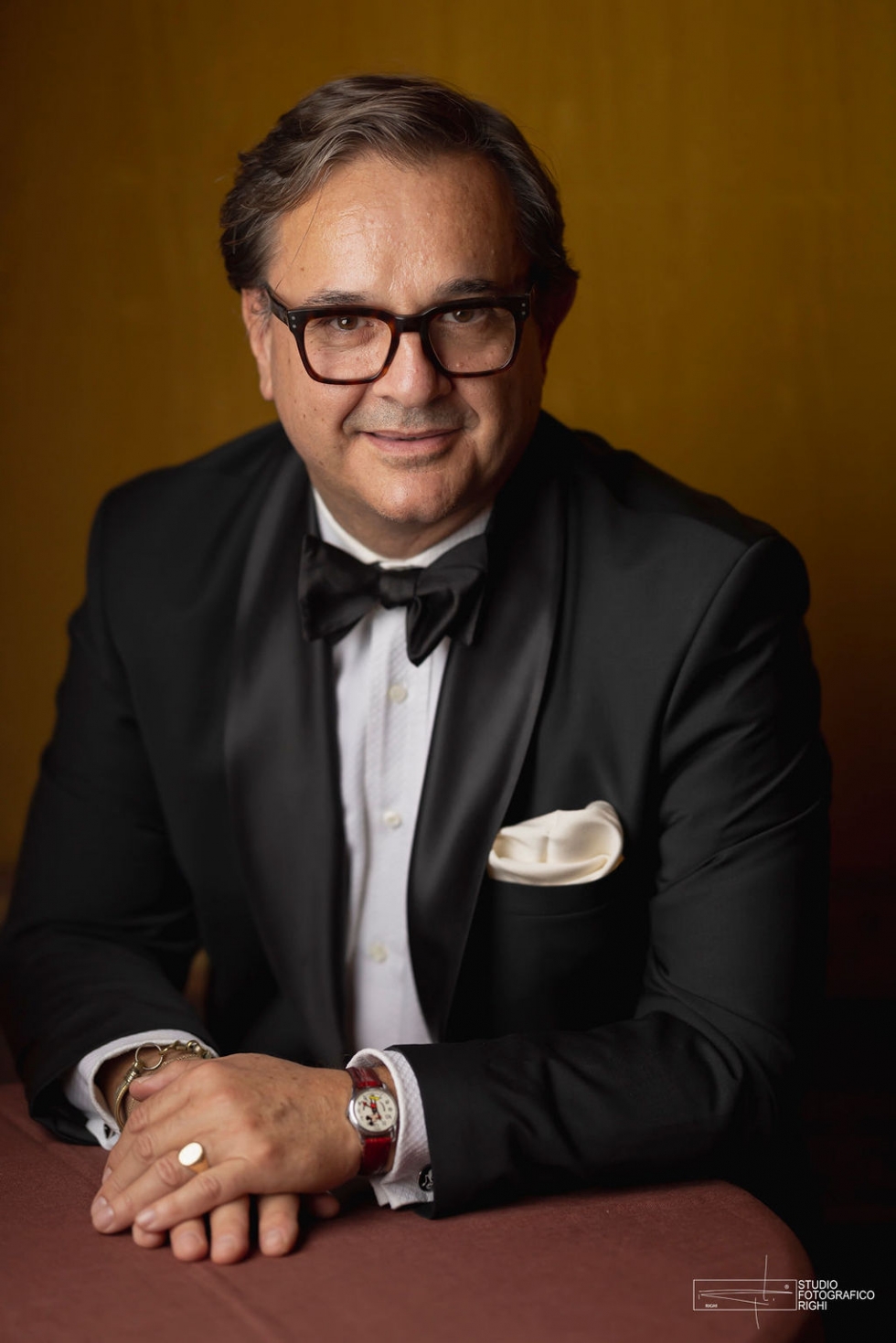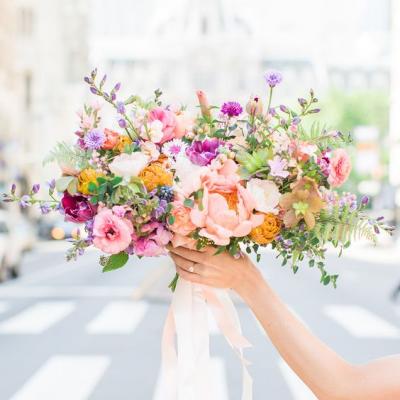Interview with the Italian "Architect of Dreams" Angelo Garini

Angelo Garini is an acclaimed Italian architect celebrated for his ability to create captivating spaces for living and hosting. Recognized by the international press as "the architect of dreams," Garini has designed breathtaking events in Italy's most stunning locations, crafted interiors for prestigious homes, and envisioned unique restaurants, venues, and gardens, complete with custom furnishings.
His expertise extends beyond design. Garini is a prolific author, with 5 books to his name, including 2 showcasing his exquisite wedding creations "Weddings in Italy" and "Il Matrimonio", and a guide for aspiring planners "The Wedding Planner Manual, according to Angelo Garini". He also shares his passion for etiquette with children in his book "Angelino e Margherita, le buone maniere spiegate ai piccoli" and explores the history of entertaining in "Tavola-Storia e Arte del Ricevere."
Garini's influence spans various media. He is the publisher of Immagina magazine, contributes to online publications, and hosted the TV series "Wedding Planner" on Real Time channel. His YouTube channel features original series on weddings, lifestyle, and events. Furthermore, he co-hosts the successful podcast "Let's Celebrate" with Tabata Caldironi, producing branded content linked to Immagina magazine.
A sought-after speaker and industry expert, Angelo Garini is a member of the Federmep board and collaborates with Italian embassies on special events. He leads training activities at vocational institutions and shares his knowledge through lectures and masterclasses at prestigious universities worldwide. As a project manager, he works with Chambers of Commerce and Isnart to promote Italian territories as luxury wedding destinations. He is a vocal advocate for sustainability in the wedding industry, organizing conferences and seminars on this crucial topic.
We were honored to connect with Angelo Garini during our recent trip to Italy. His insights into creating dream weddings and unforgettable experiences are truly inspiring.
Read on for our exclusive interview with the "architect of dreams" where he shares his unique perspective on wedding design, event planning, and the art of creating unforgettable experiences.
1. How did your experiences, surrounded by art and the beauty of the Italian landscape, shape your approach to wedding design and your distinctive style?
I had the great privilege of being born in the middle of beauty, in a family that has always cultivated a great passion for art, culture, nature in general and with a deep attention to the development of one's aptitudes and creativity. All this is what has made and is part, of what I call my "kingdom on the lake." A place much loved by several generations of my family, on the shores of Lake Maggiore, where we have always spent the summer period, as I use to do even now.
It is in that place that, thanks to my grandparents and parents, I learned to appreciate the art of receiving, done according to the historical rules of Italian protocol, but with that ease and lightness that distinguishes people who do not have to prove anything, but only to feel good and above all, to make their guests feel good.
The beauty that surrounds us helped me to develop my aesthetic sense and my passion for creating ephemeral and moving architecture and scenery, as gardens and tables are. My passion for creating beautiful tables, innovative floral arrangements, and consequently, that of creating weddings and events with that particular style that mixes the art of receiving with the grandeur of theatrical sets, starts from there
As an architect, you bring a unique perspective to wedding planning. How does your architectural training influence your design choices, particularly when considering venues, space, and the overall flow of a wedding event?
I like to call myself an event architect, precisely because my approach to wedding planning starts with the study of the spaces, interior and exterior of the location that will host that wedding. I consider style, logistics, capacity, but what I am interested in studying is the perception of the spaces themselves and the emotion that those spaces communicate.
A venue may be very beautiful, but it may not be able to tell a story. In that case it is necessary discover its hidden potential, to bring it to light. Spaces, places, panoramic views, perspectives, lights, colors, but also scents and sounds, are all elements that need to be considered. A place is always a challenge that must be turned into an opportunity. This is the real magic that I like to fulfill.
A wedding starts first of all, from the overall vision, the much-vaunted 'attention to detail" is the consequence, but never the starting point. Architect, set designer, director are all roles that I experience firsthand for the perfect success of the event.
Table setting is an art form in itself. What are your essential elements for creating a truly unforgettable tablescape? How do you balance aesthetics with functionality and the overall ambiance of the event?
I totally agree, table setting is a real art and like all arts, it has a history that goes back a long way. It is a theme that is very dear to me and, among the books I have written, there is one that deals with this subject: "Table, history and art of receiving", citing great figures such as the empress Cleopatra, Leonardo da Vinci, Palladio...to name just a few, who have given a great contribution to the growth of this art.
I like to define the table as a miniature architecture, a set of elements, shapes, colors, materials, which together must build something beautiful, made of balance, elegance and atmosphere. A beautiful table always communicates a great emotion, respecting some rules that make it enjoyable and comfortable. I consider myself an eclectic person and therefore also in what I create, there is always a strong component of creativity and the first rule I follow is that there are no rules, what really matters is the final result, which must surprise and excite. Obviously, it is necessary to have a very precise awareness of one's style, which also allows us to risk unpredictable solutions, but which then obtain the desired result. I like that in each of my works there is always what I call "the breaking point", an element that might apparently seem out of place, but which in reality is perfect in that whole.
Looking back at your illustrious career, what are some of the most significant changes you’ve observed in the wedding industry? And looking ahead, what trends or shifts do you anticipate in the future of Italian weddings?
I can say that I contributed to the birth and growth of the wedding industry in Italy.
Until the early 2000s, wedding planning involved a few steps that had been consolidated over time. The choice of the location for the ceremony and reception, a floral decoration, the choice of the menu and photographer.
The highest cost item was that for the banqueting, followed at a great distance by the other voices. Since 2001, the year I started my business, we began to propose a new concept of decoration, creating scenography and light design interventions as I used to do in my interior design projects, changing the order of importance of the different items also in terms of budget.
In those years I had the pleasure of working in the most beautiful and iconic places in Italy, but also in France and Spain.
Today the trend has changed again and what is most important is the creation of a real event in which the show, the music, the moments dedicated to dancing and the various entertainments have priority.
What makes the difference, however, and what I believe will do so more and more, is the ability to create experiences that arouse emotions and become precious memories.
The search for new destinations, the proposal of events that highlight the beauty of the places that host them, the search for a refined elegance made of unique pieces mixed with flowers, great attention to lighting and always the desire for uniqueness are the characteristics of my work now and in the coming years.
Personally, I find it much more stimulating to always invent new solutions, rather than looking for inspiration from what has already been done. For me, it is a huge pleasure to be able to be a source of inspiration for those who follow me.
To use Michelangelo's words...: "It is the destiny of those who go forward, to be followed".





















